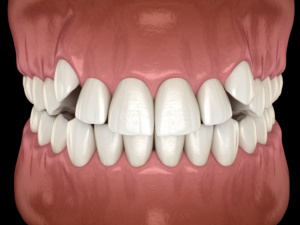
What Is a Dental Bridge?
A Dental Bridge stands as an excellent solution for replacing missing teeth, offering versatility in types such as cantilever bridges, 3-unit bridges, resin bridges and implant bridges. Bridges involve reshaping adjacent teeth, crafting a custom bridge, and securely bonding it in place.
Our clinic provides a comprehensive range of bridge materials, including porcelain bridges, zirconia bridges, full gold/metal bridges, and porcelain fused to metal bridges. Explore these options to find the ideal bridge for your needs.
Here at Cranbourne North Dental, we use advanced impression and imagining technology (3D Intra-oral scanners) together with the best, tried and tested dental labs to further enhance your experience and deliver outstanding results.
Signs you might need a Dental Bridge
A teeth bridge is an excellent solution for replacing missing teeth whilst strengthening those around it. They are usually recommended when one of the following happens:
- Missing one or several teeth.
- The missing tooth cannot be restored with a dental implant.
- The teeth adjacent to the empty space are cracked, decayed, weak, heavily filled, discoloured or have had a root canal.
- You want a fixed (not removable) solution to replace your missing teeth and do not want dentures.
What are Tooth Bridges made up of?
A dental bridge can be made out one or more of the following materials:
- Monolithic Zirconia (Ceramic) – This Ceramic (technically a metal) has excellent compressive strength and wear ratings for posterior support.
- Lithium Disilicate (Ceramic) – This glass ceramic material (also known as E.max) is extremely popular due to it’s tooth-like aesthetics and ability to be bonded onto teeth.
- Porcelain fused to Metal (PFM) – The traditional way to make crowns and bridges, with excellent long-term reliability.
- Porcelain fused to Zirconia (PFZ) – Using a new-age Zirconia ceramic as the strong base, porcelain is fused on top to improve the aesthetics.
- Gold and metal alloys – All metals have excellent compressive strength and wear ratings. These are the material of choice in heavy teeth grinders.
- If dental implants are involved, the connection material to the dental implant is usually made out of Zirconia or Titanium.
Need help with your Dental Bridge?
We have a variety of Payment Plans available – giving you the flexibility of paying for your Dental Bridge later.


What happens during a Tooth bridge appointment?
For a dental bridge on teeth:
- The teeth involved are shaved into shape and 3D intra-oral scans are sent to our local dental lab. For a Maryland Bridge, minimal shaping is required. Read more here.
- Your new custom tooth bridge is either milled or constructed and sent back to us in roughly two weeks.
- Your new dental bridge is bonded onto your teeth.
For a dental bridge on dental implants:
- The implant connection is exposed and 3D scans or impressions are taken and sent to our local dental lab.
- Your new custom implant bridge is either milled or constructed (or both!) and sent back to us in roughly three weeks.
- Your new implant bridge is screwed onto your implants.
Dental Bridge Alternatives
It’s important to note that you do not always need a tooth bridge and there are many other alternatives including:
- Dental Implants
- Dentures
- Leaving the space empty (no treatment)!
Dental Bridge Complications
The complications for Dental Bridges are similar to Dental Crowns with some added risks such as an increased chance of tooth decay. Some patients may experience complications such as sensitivity. Nerve death and a subsequent need for a root canal occurs in roughly 10-20% of crown and bridge cases. Others may experience porcelain chipping or even ceramic fracture. Repair may not be possible and replacement of the crown is needed. Hence we recommend that to professionally check and clean your dental bridge on a regular basis. Patients who grind their teeth still require a night splint to protect their dental bridges. Remember, all dental restorations have a limited life-span and will require eventual replacement – nothing can truly survive the hostile mouth environment – not even your teeth!
Call Us or Book Online Now
Common Problems
Frequently Asked Questions

How much does a dental bridge cost?
The cost of bridging your teeth will greatly depend on the material and number of teeth you are bridging. A typical Maryland Bridge will cost the same as a tooth crown and a 3-unit bridge can cost up to 2-3x the cost of a dental crown.
Why are Dental Bridges so expensive?
When a tooth is heavily filled/cracked/just had a root canal treatment, your dental professional might recommend a crown on the tooth. Then you hear the price and then, Why does it cost so much?
A bridge on several teeth is akin to a customised piece of jewellery. The teeth are prepared precisely and a scan or mould is taken and a specialised dental laboratory creates the bridge to fit the exact shape of your prepared tooth! It is entirely custom made and extremely precise to ensure a great result. The materials are also highly specialised and can be made from zirconia, porcelain, gold and other materials. Because of all the steps involved, materials and the time taken, a bridge can be more expensive. It is also a much better long-term option for your tooth.
How long do dental bridges last?
Tooth bridges can last between 10 to 15 years, depending on the material used and how well they are cared for. Contact us for regular dental check-ups to maintain good oral hygiene and extend their lifespan.
How do I clean my new Teeth Bridge?
The best way to clean a bridge is to brush it normally, then use super-floss to clean under the pontic. If super-floss is not available, we recommend the use of a water-flosser to remove debris.







































